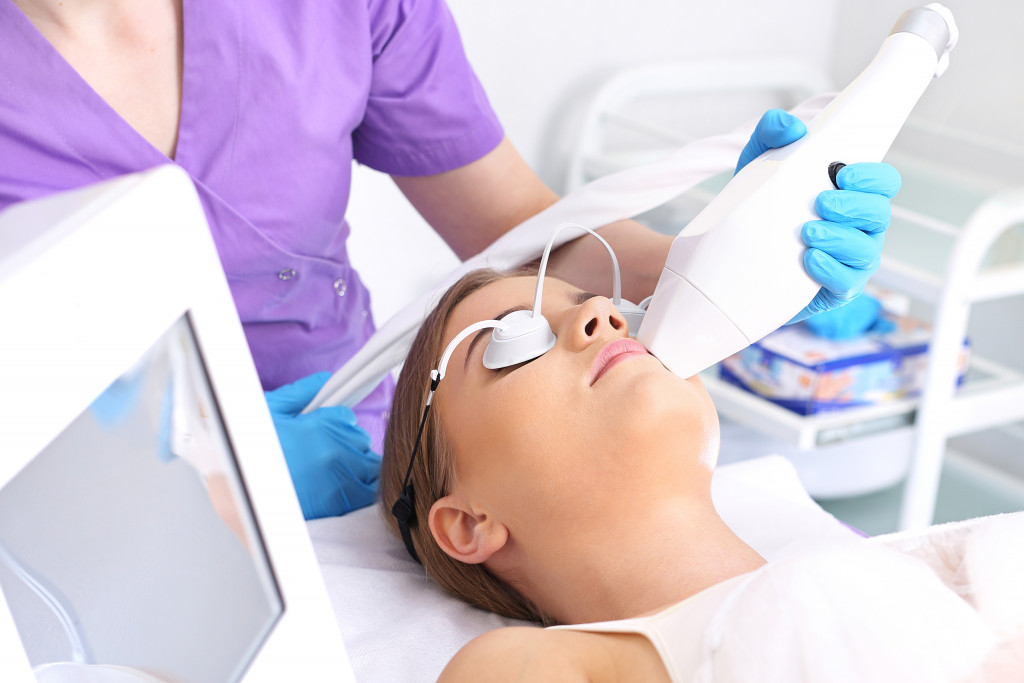Disclaimer: This website provides health information for educational purposes only and is not a substitute for professional medical advice, diagnosis, or treatment. Always seek the guidance of a qualified healthcare provider with any questions you may have.
Supple, hydrated, and smooth skin is a common skin goal that many want to achieve for themselves. But with stubborn skin problems such as textured skin, it can be an uphill battle. It’s still a goal that’s achievable, though. By learning what causes it and what can be done to correct it or prevent it, you can, too.
Textured skin is a common skin problem that every dermatologist or beauty expert who has attended an esthetician school is no stranger to. You’re probably not a stranger to it, too. In fact, you’re probably looking to get rid of yours.
What Is Textured Skin?
Textured skin, as the name implies, is skin that has some texture. The texture is defined as anything that disrupts the surface by creating unevenness and an inconsistent sensation. Textures in this context include mentioning a few dry spots, bumps, ridges, scars, and roughness. This is frequently caused by acne or a skin condition such as dehydrated skin or milia.
What Causes Textured Skin?
One study suggests that both intrinsic and extrinsic factors contribute to rough-textured skin. For example, the aging process is further exacerbated by the external elements the skin is exposed to. These include sun exposure, pollution, poor nutrition, and smoking. It was observed that UV radiation speeds up the aging process, making the skin less resilient and taking more time to recuperate the damage acquired from intrinsic and extrinsic factors.
Another common reason for uneven texture on the skin is dead skin cells. A build-up of dead skin cells can result in white, flaky spots. Although your skin shedding these dead skin cells is an entirely natural function to refresh itself, it may build up over time and cause more problems than an unflattering appearance.
Remedies You Can Do at Home for Textured Skin
The best place to start is at home. Read these tips and assess whether what you’re doing is enough and working for you.
A Change in Diet
Some changes or adjustments in a person’s diet are always good, especially if it’s for the better. Consider adding some antioxidant-rich food, probiotics, low-fat or fat-free dairy products, whole-grain products, among others.
While on the topic of food, you might as well add water to the mix. If you’re someone who often forgets or doesn’t mind drinking less than the required amount of water a day, it’s time to form the habit. Although its effects are not noticed right away, drinking water does contribute to smoother skin. Participants of one study showed that increased fluid intake reduced dryness and roughness on their skin while slightly increasing elasticity.
Healthy Habits
Did you know that one all-nighter is all that’s needed to get swollen eyes, paler skin, more wrinkles, and dark circles? In the long run, lack of sleep causes the skin to age faster and recover from environmental stressors longer. Be sure to get your beauty sleep because both your body and skin need it to repair and restart.
Another healthy habit worth mentioning is regular exercise. The increase in blood flow helps decrease eye puffiness, promote skin repair and healthier skin. Many studies have shown how exercise contributes to healthy skin, but it’s always best to experience the benefits yourself.
When talking about healthy habits, it’s essential to cover the opposite, too. One of which is smoking. Smoking causes premature aging, meaning your skin ages faster, diminishes elasticity, and prolongs healing.

Professional Treatments to Try
If you prefer to leave the work to professionals, consider setting an appointment for a consultation. Discuss possible treatments such as the following.
Microdermabrasion
Microdermabrasion is a process that includes exfoliating the top layer of skin to refresh the appearance of the skin. It rejuvenates by removing age spots, UV damage, hyperpigmentation, uneven texture and skin tone, and other skin problems.
Microneedling
Microneedling involves using fine needles that puncture your skin. It rejuvenates the skin by puncturing it with tiny needles, causing controlled skin injury triggering the production of more collagen in an effort to mend the microscopic wounds caused by the needles. The new collagen that forms will assist in smoothening out the skin, filling in fine lines and scars. This method is frequently used to treat big pores, acne, burn or surgical scars, stretch marks, and other cosmetic issues.
Chemical Peels
A chemical peel is a skin rejuvenation procedure used on the face, hands, and neck. They are used to enhance the skin’s look or texture. The treatment is administered to the region being treated, causing the skin to peel off. When this occurs, the layer of skin beneath is usually smoother, less wrinkly, and less damaged.
People may receive chemical peels for a variety of reasons. Chemical peels are a go-to solution for people to get rid of their acne scars, uneven skin tone, redness, wrinkles, and fine lines, and more.
Final Thoughts
Many factors contribute to a person’s skin condition, both externally and internally. Although textured skin is something to deal with before achieving supple, youthful, and fresh-looking skin, it’s not entirely impossible. These homemade and professional solutions can help.

